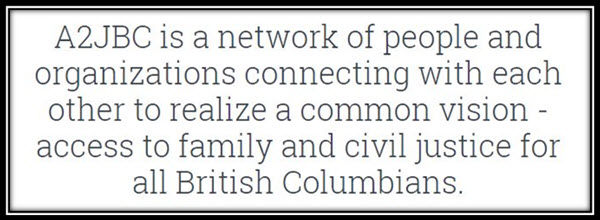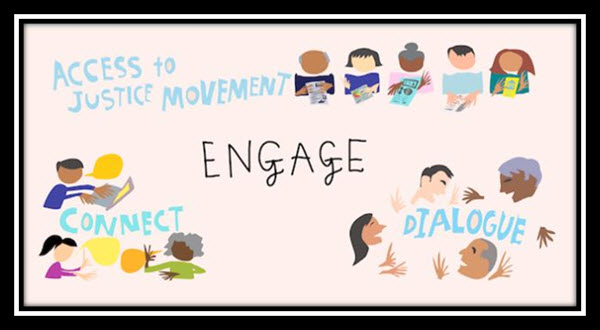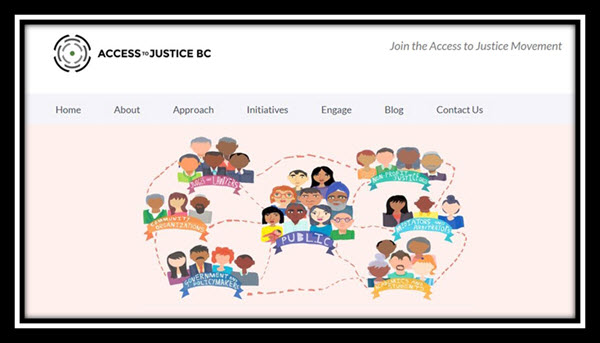Jason lived a comfortable middle class life until he and his wife, Maria, separated. She was angry and not interested in peacefully working out a separation arrangement for parenting and dividing their assets. With family financial support, Maria hired a lawyer. Jason couldn’t afford one, so he tried to manage the court process on his own.
He found it very stressful, complicated and time consuming. Jason didn’t understand the process and was mortified when he was chastised for getting it wrong. What was worse, Maria’s lawyer was able to persuade the judges of things Jason felt were wrong, but he didn’t know how to make himself heard. The experience was undermining his health. Jason decided to give up - he stopped attending court hearings and stopped responding to letters and emails about the case.
Unfortunately, Jason’s story is too common. People often give up before they get what they need from the justice system. Lawyers, judges, government policy makers and others know the system is not working for people the way it should. Access to Justice BC (A2JBC) is a network of justice system stakeholders, chaired by the Chief Justice of British Columbia and collectively committed to improving access to justice so that Jason’s story can be different in the future.
Meaningful stakeholder involvement
A2JBC’s unique membership brings to the table perspectives from users (Aboriginal, multicultural, and self-represented litigants, people with disabilities, and small businesses), from a cross-section of justice system leaders (judges, lawyers, non-profits and government), and from other sectors like health and community services. Really listening to users’ experience and involving them in developing solutions is crucial to justice reform that works.

Action-oriented solutions
Well-intentioned people have tried to change the justice system before. Over decades, well-reasoned reports have been written recommending changes. But relatively few of these recommendations have been implemented. And even when they have been, change has been fragmented. The results have not made a significant difference for people needing help with legal problems. A2JBC has decided that instead of writing reports, it will focus on encouraging the key justice stakeholders to act – and to act in a way that will make a difference.
A2JBC has adopted a Framework for Action that seeks to change the justice system from being court-centred to user-centred. While it does not run projects itself, A2JBC seeks to push and prod the system into doing things that can be demonstrated to improve access to justice for British Columbians. It encourages justice system organizations to strive for better access to justice, which involves one goal with three interrelated and measurable elements:
• improving access to justice for the whole population
• improving each user’s experience of the justice system
• improving costs.

Family Justice Initiatives
A2JBC has begun by focusing on the family justice system. It is seeking to demonstrate and test a new approach to justice reform by supporting three collaborative initiatives.
• Unbundling legal services to make lawyers’ services more accessible, affordable and useful. This initiative has developed a roster of lawyers willing to provide unbundled services and a toolkit to support them in doing it well.
• A family justice pathfinder. This initiative will design a combined online and in-person family justice service to help families find a pathway tailored for them through the transition of family separation. It will start small, focusing on Kamloops area families and taking a user-centred approach to design. The ultimate goal of this initiative is a service design that can be applied province-wide for the benefit of all BC families.
• A presumptive consensual dispute resolution initiative that recognizes the short and long term benefits of families working out their issues on their own, as much as possible without third party adjudication. The integrated model will combine:
o accessible information and mandatory education
o in depth mandatory upfront assessment process and referral to needed services
o a presumption that most court applicants will go through a consensual dispute resolution process before having their case heard by a judge, and
o targeted and timely Court intervention for those who need it.
This initiative will also start small, with a model in one location so lessons learned can then be applied province-wide.
All three initiatives involve a wide range of justice system organizations co-operating to make improvements in access to justice a reality.

How will this help?
How will this all impact people in Jason’s situation? We don’t know the answer to that question yet, but we do know that something needs to be done to make the system work better for families.
Perhaps Maria’s anger need not determine the process. If mediation were presumed to be the first option, rather than court, maybe Jason and Maria could deal with her anger and sort things out with the help of a dispute resolution practitioner. If that isn’t possible, affordable access to a lawyer might help Jason present his case to a judge and prevent him from giving up. A2JBC is dedicated to finding ways to improve access to justice for people like Jason, Maria and their children.
Provincial Court Chief Judge Thomas Crabtree is a member of the A2JBC executive and leadership group. He comments: “It is early days yet to know whether Access to Justice BC will succeed, but we have to try. We are not going to move the dial on access to justice until we start working together, turn our perspective upside down so that we look at everything from the perspective of the users of the system, and start measuring our success in terms of whether we are making things better for people in BC.”
Get more information about Access to Justice BC:
• on its website https://accesstojusticebc.ca/
• by signing up on the website to follow its blog
• by following @A2JBC on Twitter.

